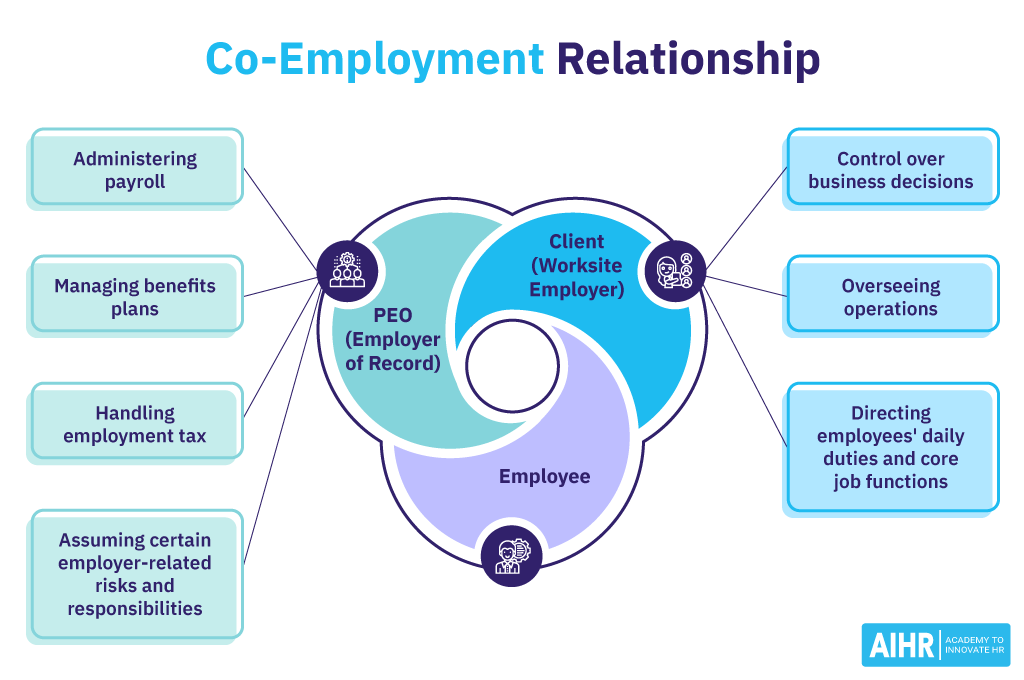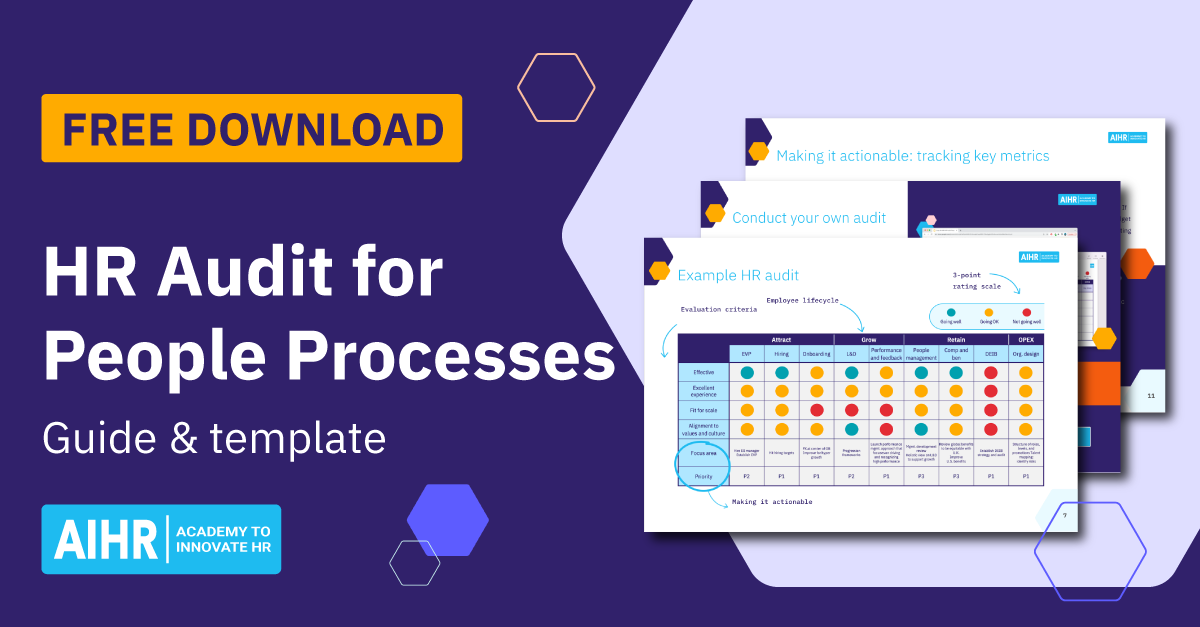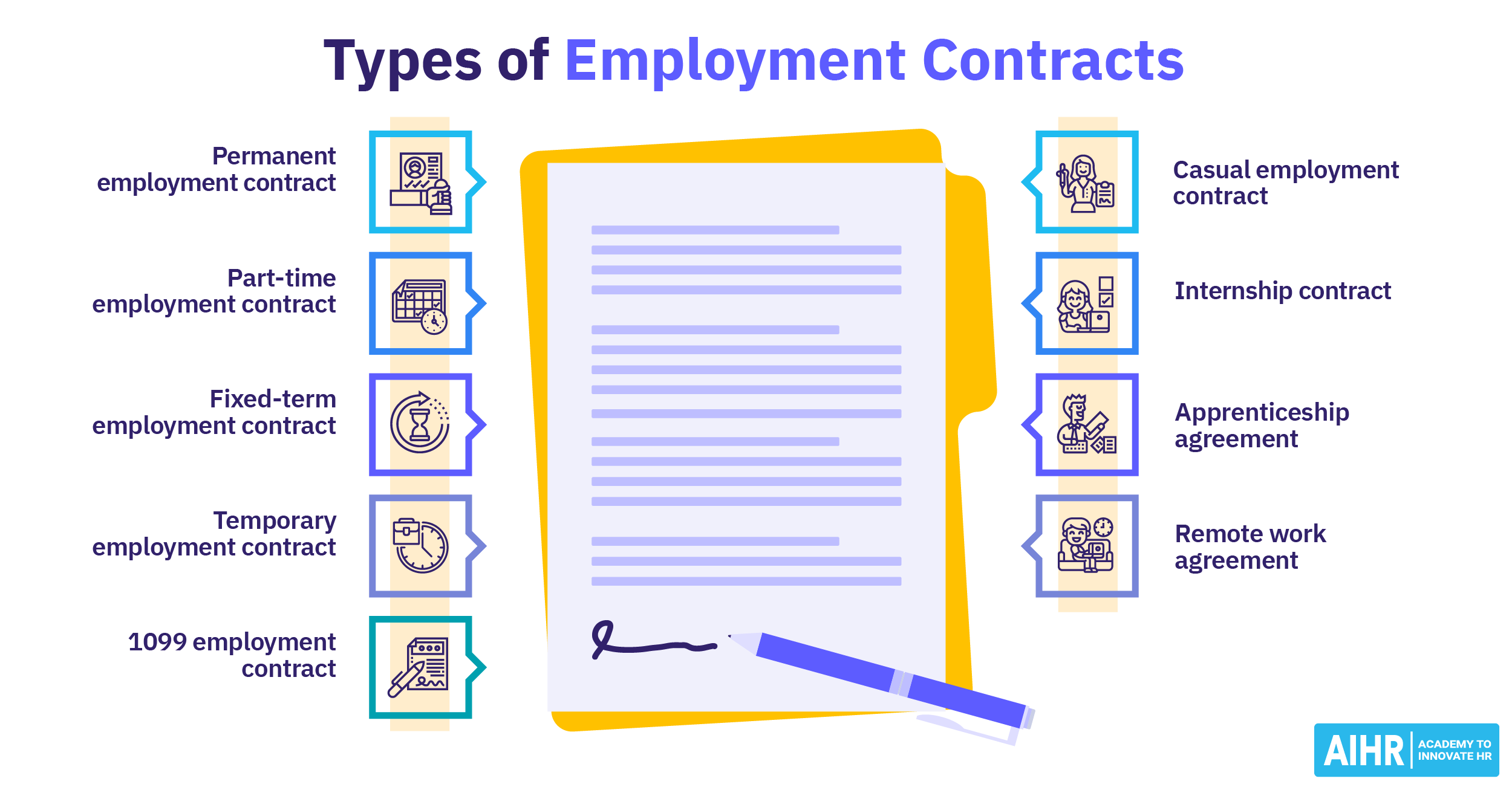Co-Employment
What is co-employment?
Co-employment is a business arrangement where two or more entities share employer responsibilities for the same group of employees. This often occurs in a professional employer organization (PEO) co-employment relationship, where a company partners with a PEO to manage HR functions like payroll, benefits, and compliance. Similar setups are often involved in staffing agencies or other external partners.
In a co-employment setup, the primary employer (the client company) retains control over day-to-day operations, such as assigning job duties and enforcing workplace policies. Meanwhile, the co-employer (e.g., the PEO or staffing agency) oversees administrative tasks like tax filings, benefits management, and legal compliance.
For example, a company might partner with a PEO to outsource HR tasks. The PEO becomes the “employer of record” for tax and legal purposes, while the client company directs the employees’ daily work.
This arrangement is particularly useful for small to medium-sized businesses that want to reduce administrative burdens, manage compliance risks, or provide competitive benefits. However, it’s important for both parties to have clearly defined roles to avoid legal complications, such as the party responsible for employment-related liabilities.

Co-employment examples
Here are some common examples of co-employment:
- Small business with a PEO: A small business partners with a PEO to manage HR functions like payroll, benefits administration, and compliance. The PEO acts as the “employer of record” for tax and legal purposes, while the small business maintains day-to-day control over the employee’s work activities.
- Temporary staffing agencies: A company hires temporary employees through a staffing agency. The agency handles recruitment, payroll, and employment benefits, while the company supervises and directs the worker’s daily tasks. Both the agency and company may be considered co-employers.
- Freelancers through agencies: A creative agency provides freelance designers to a client company. The agency oversees administrative aspects like payments, while the client dictates the project’s direction and outcomes.
- Joint ventures: Two companies collaborate on a project and hire employees who work under the supervision of both organizations. An example would be a construction project where employees follow site-specific policies set by one company but are paid by the other.
What are the benefits of co-employment?
Some of the most significant benefits of co-employment are:
- HR administration and support: Co-employment allows businesses to outsource complex, time-consuming HR tasks. This includes recruitment, payroll processing, employee benefits administration, and compliance with labor laws.
- Expertise in diverse HR areas: PEOs bring expertise in a wide range of HR areas, which can be especially beneficial for businesses lacking in-depth HR knowledge.
- Lower costs: While PEO services come with fees, they can be offset by the reduced need for in-house HR staff and economies of scale achieved in areas like health insurance and workers’ compensation insurance.
- Compliance and legal expertise: Keeping up with labor laws, tax codes, and regulatory changes can be challenging. PEOs are well-versed in these areas and can make sure a business remains compliant, reducing the risk of legal issues.
What are the risks of co-employment?
Some of the most significant co-employment risks to consider include:
- Confusion over employer responsibilities: Co-employment situations can lead to confusion about which entity is responsible for certain aspects of employment, such as payroll, benefits, and worker’s compensation.
- Employee misclassification: If contractors or temporary workers are treated like regular employees, they may be deemed as co-employed. This misclassification can lead to legal repercussions, including fines and orders to pay back wages.
- Benefits discrimination: If co-employed workers receive different benefits from regular employees, it could lead to discrimination claims. This can be particularly challenging when co-employed workers perform tasks similar to regular employees but receive lesser benefits.
- Legal and regulatory compliance: Both parties in a co-employment relationship must ensure compliance with a wide range of employment laws and regulations. This includes wage and working hour laws, anti-discrimination laws, and workplace safety regulations. Missteps can lead to legal liabilities for one or both parties.
Co-employment vs. joint employment
Co-employment and joint employment are two different concepts often used in employment relationships. Here’s a breakdown of the differences between the two:
Definition
A relationship where two companies both act as employers of the same employee, typically in a PEO arrangement
A legal situation where two or more businesses jointly determine key aspects of an employee’s work
Purpose
Often used to outsource HR, payroll, and benefits administration
Arises when multiple businesses share control over the same employees, usually due to operational needs
Legal responsibility
Both entities share legal and employer responsibilities, but often with clear delineation of roles
Both employers are responsible for compliance with employment laws, often without clear role delineation
Common scenarios
Common in relationships with Professional Employer Organizations (PEOs)
Often seen in franchisor-franchisee relationships, contractor-subcontractor relationships, etc
Risk sharing
Risks, especially related to HR compliance, are shared between the PEO and the client company
Risks are shared between the joint employers, often leading to complex legal implications
Co-employment dos and don’ts
Here’s a practical list of dos and don’ts to help HR professionals effectively manage co-employment relationships while minimizing risks:
Do
- Understand the relevant laws: Familiarize yourself with co-employment laws and regulations to ensure compliance, especially regarding employee classification, tax obligations, and worker protections.
Work with reputable partners: Choose co-employment companies with a strong track record, especially those experienced in managing shared employer responsibilities effectively. - Maintain proper documentation: Keep records of employment contracts, tax filings, and workplace policies to mitigate risks and comply with rules and regulations.
- Communicate with employees: Ensure employees understand the co-employment arrangement, including who manages payroll, benefits, and HR responsibilities.
- Review contracts regularly: Periodically review and update contracts with the PEO to reflect current needs and regulations.
Don’t
- Ignore compliance risks: Overlooking potential co-employment risks, such as joint liability for employment violations, can lead to lawsuits and penalties.
- Lose control of employees: Avoid delegating full management of your employees to the PEO, as this can blur the lines of responsibility.
- Assume the PEO handles everything: While a PEO manages many HR functions, the client company must still ensure compliance with co-employment rules and maintain a safe work environment.
- Overlook communication with the PEO: Regularly engage with the PEO to address changes in laws, workforce needs, or contract terms.
- Underestimate costs: Be clear on fees and ensure the PEO’s services provide value without straining your budget.
FAQ
A co-employment agreement is a formal arrangement between two entities, such as a client company and a Professional Employer Organization (PEO), where they share employer responsibilities for certain employees. The PEO typically handles HR tasks like payroll, benefits, and compliance, while the client oversees day-to-day management and job responsibilities.
Co-employment involves two entities sharing employer responsibilities for the same employees, with one managing HR tasks (e.g., a PEO) and the other handling day-to-day supervision. In outsourcing, a company delegates tasks or functions to a third-party vendor, which independently manages its workforce and delivers services without shared employer responsibilities.
No, co-employment is not illegal. It is a common and legitimate arrangement, especially in partnerships with PEOs or staffing agencies. However, it must be managed carefully to comply with labor laws and avoid issues like misclassification or liability for employment violations.









